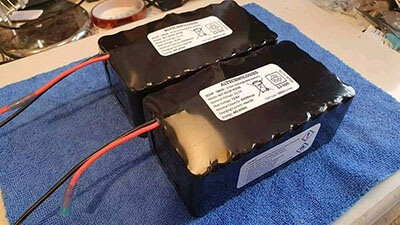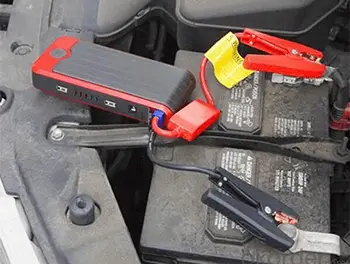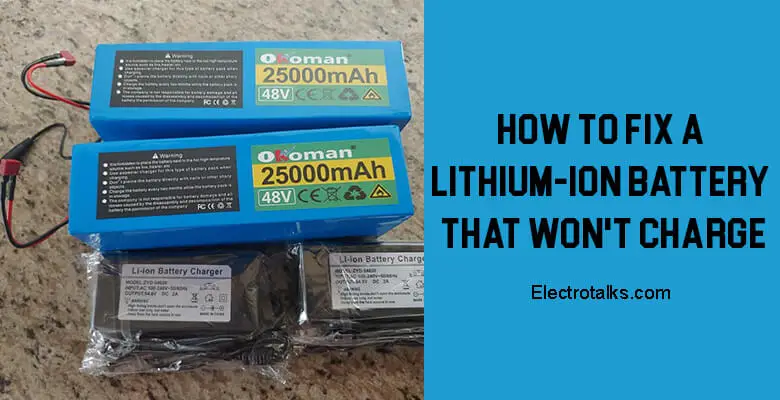“As an Amazon Associate, I earn from qualifying purchases. Without Any Extra Cost to You!”
Lithium-ion batteries, the most common type of rechargeable battery, are electrochemical cells. Lithium ions migrate from the negative electrode to the positive electrode during discharge and vice versa during charging.
A lithium battery has the potential to stop charging. You should not be concerned if this occurs to you. To fix it, carefully follow the instructions elaborated in this article.
The best way to fix it is using an overvoltage-protected charger, charge your bare lithium battery directly; do not charge it using a universal charger.
It has the potential to be quite hazardous. Inconsistent current flow is generated by uneven charge distribution in the cell due to contact resistance or charge detection.
This article has well-explained points and steps on fixing a lithium-ion battery that is not charging.
You will also find answers to some of the frequently asked questions to better understand lithium-ion batteries.
Follow the article keenly to get the best.
Fixing a lithium-ion battery that won’t charge
There are various methods to fix a lithium-ion battery that does not charge. They include;
Method 1; do a full recharge of your battery.

If your battery can no longer hold a charge and is draining at an alarming rate, you may be able to salvage it by performing a complete recharge.
Since you’ll need to fully drain the battery for this to work, continue to turn it back on until it doesn’t have enough power to boot up anymore.
After that, connect the power cord and allow the battery to charge for a minimum of 48 hours.
Unless the voltage is maintained above 2V, the lithium battery’s internal structure will be destroyed, resulting in a reduction in battery life.
Because of the excessive self-discharge, a low voltage can be experienced as a result.
Using a charger with overvoltage control to directly charge the bare lithium battery rather than a universal charger can solve the problem.
The second root reason is an unequal current, which can potentially be the cause. Inconsistent current flow is generated by uneven charge distribution in the cell due to contact resistance or charge detection.
Even if the voltage difference is very tiny during short-term storage, it becomes significant when the voltage difference is held for a lengthy period.
Charging can correct this low voltage issue, which has nothing to do with product quality.
If the battery you’re attempting to repair is associated with a device that you use regularly, you’ll want to complete this task over the weekend or seek a backup device that you can use in a couple of days while you work on it.
Method 2; jump-start your battery

Sometimes you only need a little pushing to get things moving, and in the world of electronics, such pushing is referred to as a jump-start.
Without exceptional driving fortune, you’ve undoubtedly had to jump-start a car at least once or twice, and the procedure for starting a lithium-ion battery is very similar.
Dealing with wiring is always a risk, so proceed with caution and make sure you understand the process entirely before beginning.
The battery should be removed from the gadget, and the negative and positive inputs should also be noted.
Remove the B connector off the smaller end of a USB cord that you don’t mind losing, exposing the red positive and black negative wires on the other end.
Connect the cable to your computer’s USB port and connect the uncovered wires to the relevant feeds on the battery using a soldering iron.
Eventually, the battery should be resurrected and capable of being recharged.
Method 3; repair your battery
Soldering iron and maybe a little confidence are all you need to fix a broken battery. If your battery is genuinely damaged, you can repair it yourself.
Remember that working with batteries and electronic equipment contains some inherent risks, so approach with extreme caution when working with them.
Method 4; replace the battery
To be on the safe side and ensure that your battery will function properly, you should get a new battery.
Despite the rising demand for lithium-ion batteries over the last few years, the price of lithium-ion batteries has declined dramatically due to the proliferation of small electronic gadgets.
Find the precise battery your device requires by searching online using your product number or visiting a local retailer.
Frequently Asked Questions lithium-ion battery
When is one supposed to charge the lithium-ion battery?
when the temperature ranges between 50 and 86 degrees Fahrenheit (10 and 30 degrees Celsius), charge the battery.
The most efficient operation of lithium-ion batteries occurs within the prescribed temperature range.
However, if necessary, lithium batteries can be charged when the temperatures range from 32 to 113 degrees Fahrenheit (0 to 45 degrees Celsius).
What leads to battery explosion?
As a result of a faulty protection circuit or a malfunctioning detecting cabinet, the charging voltage will exceed 5V, resulting in electrolyte dissolution, a violent reaction within the battery, and a quick rise in battery internal pressure.
When the battery reaches a certain point, it will explode.
During ultrasonic welding, intense energy is used to melt the inside diaphragm of the battery, causing the positive and negative electrodes to short-circuit and explode.
Conclusion
To conclude, lithium-ion batteries are found in a wide variety of consumer electronics and hybrid and electric vehicles.
While it is not as expensive as replacing conventional AA and AAA alkaline batteries, replacing lithium-ion batteries for electronics can be very expensive.
It is possible to recharge Lithium-Ion batteries; however, they only survive over a certain number of rounds before the battery begins to degrade.
When they are first charged, they take longer to charge and lose their charge faster as time goes on. Be keen when handling batteries.
In most cases, processing inefficiencies cause internal overheating, electrolyte decomposition, and battery expansion, which leads to battery failure.
Manufacturers must maintain rigorous control over the battery processing process and the workshop environment to avoid short-circuiting and overheating the batteries.
When a lithium battery is charged, it will naturally grow, but it will not extend more than 0.1 mm in most cases.
On the other hand, overcharging will result in electrolyte breakdown, increased internal pressure, and finally, the expansion of lithium batteries.
